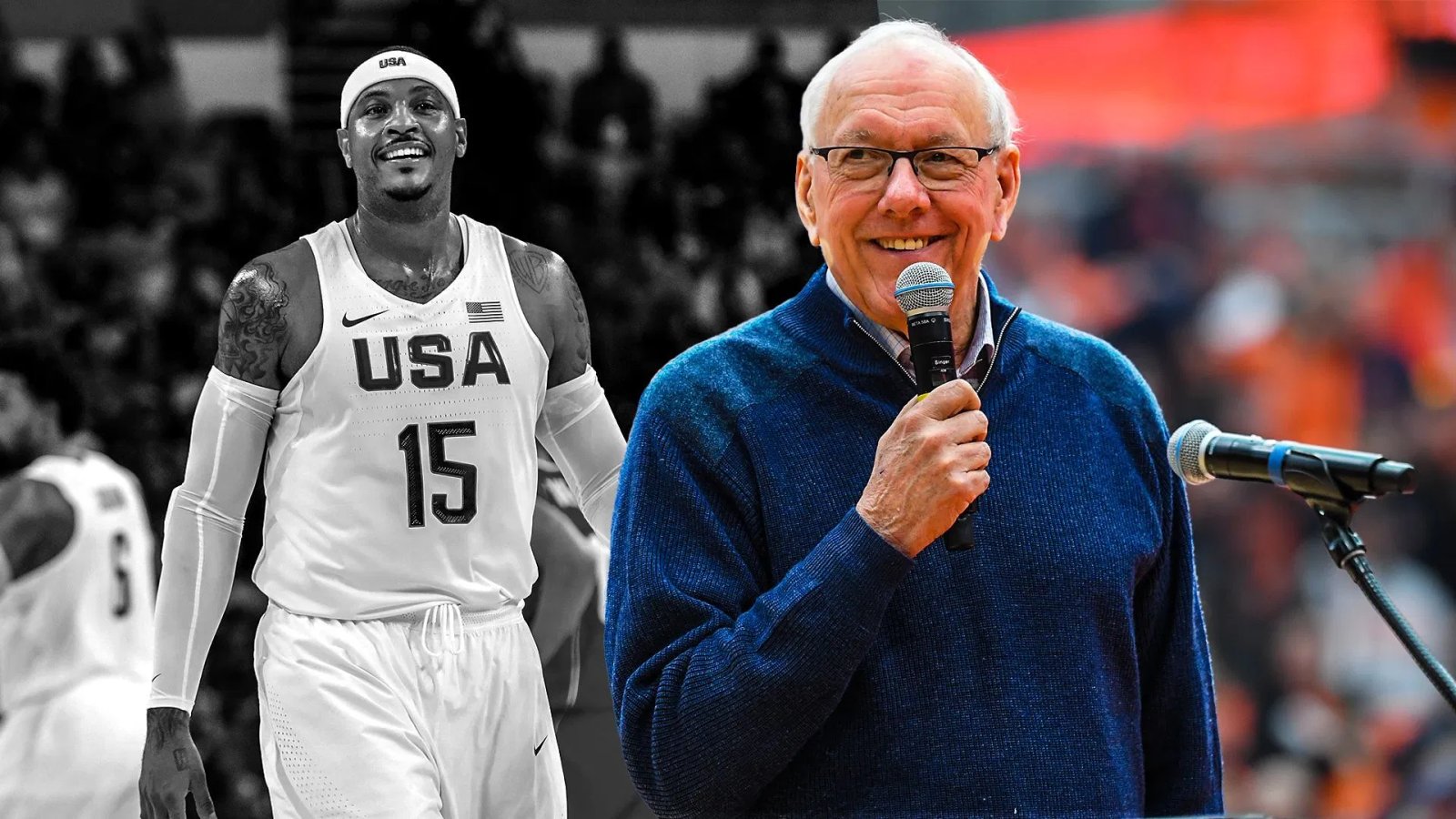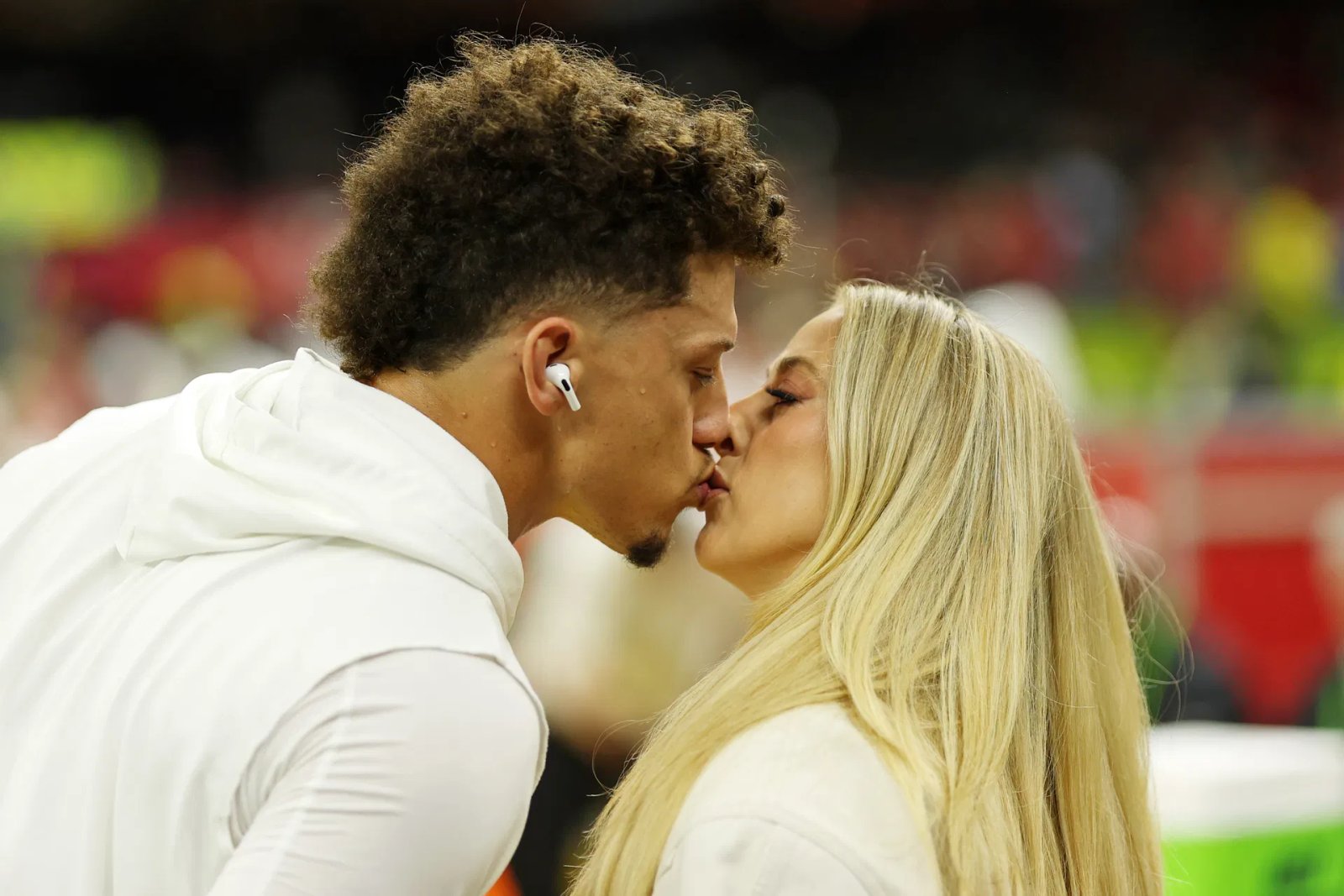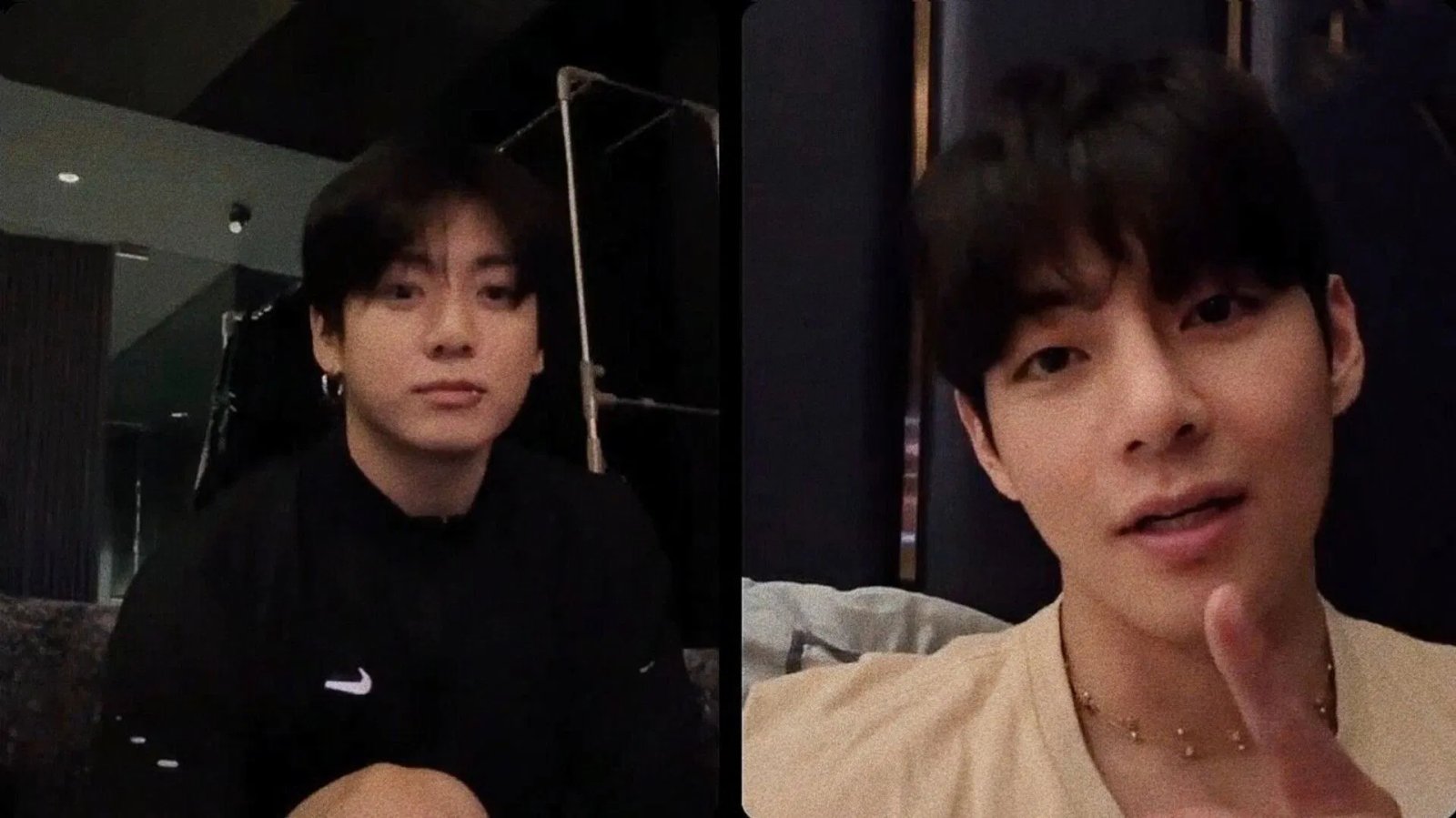Former Syracuse coach Jim Boeheim on Carmelo Anthony’s HOF induction, legendary Cinderella Run and a lot more (EXCLUSIVE)

Technically, Carmelo Anthony stayed on Syracuse’s campus for a small fraction of his life. Yet, Anthony produced long-lasting memories that have impacted both the Syracuse men’s basketball team and himself forever.
Anthony played the main role in Syracuse’s lone national championship run (2003), proving that a program’s best freshman scorer could also lead a relatively inexperienced team to the Big Dance. Despite declaring for the NBA Draft shortly afterwards, Anthony remained connected to Syracuse throughout his 19-year NBA career.
In 2009, Anthony donated $3 million to initially fund the $19 million budget for the “Carmelo K. Anthony Basketball Center.” In 2013, Syracuse retired Anthony’s No. 15 jersey at halftime against its key rival (Georgetown) at the former Carrier Dome. Anthony remained connected to former Syracuse coach Jim Boeheim both as a confidant and when they partnered again with USA Basketball en route to three gold medals together in Beijing (2008), London (2012) and Rio (2016). A little over 22 years following SU’s NCAA championship, Anthony’s son, Kiyan, will play for the Orange next season.
•
![]()
“It’s a great story,” Boeheim told Sportskeeda. “It’s only been one year here, but he’s been Syracuse for life.”
Unlike during his lone season at Syracuse, Anthony never won an NBA championship amid stops with the Denver Nuggets (2003-11), New York Knicks (2011-17), Oklahoma City (2017-18), Houston Rockets (2018-19), Portland Trail Blazers (2019-21) and Los Angeles Lakers (2021-22). But Anthony will become inducted into the Naismith Basketball Hall-of-Fame as a first-ballot honoree after becoming one of the league’s most dominant and consistent scorers that led to the 10th-place finish on the NBA’s all-time scoring list, 10 All-Star appearances and a place on the NBA’s 75th Anniversary team.
A strong part of Anthony’s Hall-of-Fame resume still points to how he helped Syracuse both for his on-court production and his philanthropic efforts.
“He’s had a great career and has given back to every place that he’s been,” Boeheim said. “That’s what you like to think when you think about a Hall-of-Fame type person. He’s that kind of person.”
Boeheim spoke to Sportskeeda about Anthony’s Hall-of-Fame induction, memorable moments during his freshman season at Syracuse and why he told Anthony he should leave for the NBA Draft instead of returning for his sophomore year. Boeheim also ranked Anthony’s placement in USA Basketball and addressed some of the criticism Anthony faced in Denver and New York.
Editor’s note: The following one-on-one interview has been edited and condensed.
How do you remember processing when [assistant coach] Troy Weaver alerted you about Melo and then when you first saw him play at Towson Catholic?
Boeheim: “Troy is a very good evaluator. He came to me. We usually don’t go out during the year. But we had a break. He said, ‘You need to come down to see this kid in Baltimore.’ At that time, I think Melo was rated 40th in the country, which is good. But he hadn’t had the explosion yet. But he told me, ‘This kid can take us to a Final Four.’ I said, ‘All right,’ but you don’t necessarily believe that. You hope that it’s true. But you don’t necessarily believe it. So I said, ‘We’ll go see him.’ So I remember getting there, we sat down and the game started quickly. He’s a nice-looking kid with good size. But he’s on the thin side. But he hit a 3 to start the game. Then he hit a pull up. Then he drove by the guy and dunked it in the first three games of the game.
So I turned to Troy, and I said, ‘You know, you might be right.’ (laughs). He committed early to us. He never wavered. He had to get the test score. He got it. But he never thought about going to the NBA. He never thought about going somewhere else. He said, ‘Coach, I want to come to Syracuse.’ That was it. He was a great teammate. Players loved him, and so did all of the fans. He was just a one-of-a-kind player. At that time, for a freshman to take his team to a national championship with two other freshman, a couple of sophomores and really only one senior that started. That was unusual at that time.”
Boeheim: “Right from the beginning, he was always all in. He wanted to win. He wasn’t concerned about going to the NBA. He wasn’t thinking about points. He just wanted to win. I think one of his worst games of the tournament, he had 13 points in the Oklahoma State game [on 5-for-16 shooting in the second round], and he said, ‘Don’t worry. I’ll be there.” In the last two games, he was really unbelievable. Against Texas and Kansas, he had almost 60 [53 total]. He just dominated the games.”
You were both part of the documentary on the title time and you both recalled that Melo helped calm your nerves before the game. What did he do?
Boeheim: “He thought I was just nervous. But I just had an upset stomach (laughs). He told me, ‘Coach, we got this.’ I said, ‘I’m all right. I’m good.’”
He was showing such great things throughout his freshman season. But what do you think made Melo ready to meet that moment in the semifinal and national title game?
Boeheim: “I just think he had gotten stronger during his year at Oak Hill, and he came in at about 220 [pounds]. So he was a man physically. He could do whatever had to be done physically to get inside and rebound. He didn’t just rely on his shooting. He could do other stuff. He averaged 10 rebounds a game, which is very hard to do in college. Very few people average 10 rebounds a game. Usually, that’s just a center.”
Interestingly, you wrote in your book that you thought Melo would be a two-year player. But because of how much stronger he got in the weight room that he would be one-and-done.
Boeheim: “He was 180 [pounds], and never could have done what he did even for us. But he gained the weight at Oak Hill [a year before Syracuse] and got stronger and stronger. He was 220 [pounds]. It was a no-brainer that he was ready to go to the NBA and became the top three pick in the draft. He was physically ready. A lot of college players aren’t physically ready. He was physically ready to go.”
What’s interesting is Melo has said that he actually wanted to come back….
Boeheim: (interrupts) “Well, that’s not the whole truth (laughs). He blames me, but when he came in to meet with me, it was already decided that he was going to the NBA. I joked with him that ‘you’re leaving.’ But he already was. He was leaving.”
Did any part of you feel tempted to tell him to come back?
Boeheim: “No. He was 100% ready to go. You don’t try to pull a kid back when he’s a top two or three pick in the Draft. He really in his heart wanted to go, even if he had thought about staying at the end. If I said nothing, he still would’ve said, ‘Okay, I’m going to go.’ This was 100%. It wasn’t 90%. It was 100%.”
Specifically with the Melo practice facility, can you contextualize what impact that made on the program?
Boeheim: “We had no practice facility before. We were practicing in a building that had other sports practicing at the same time with track and football. They were kicking and throwing shot puts while we were practicing. So we had no facility. But he helped. We never would’ve built it if he didn’t make the initial contribution. It’s state of the art. It still is today many years after it’s been open [since 2009]. So without that facility? Now it’s an NIL kind of game, too. But when we built the facility, it was more of a facility game. So it helped us in recruiting. But it still helps you because you have to have a facility. So we have that because of him. It’s a huge, huge importance to our program.”
Through Melo’s NBA career, Kobe [Bryant] and LeBron [James] often marveled about his footwork. LeBron said that Melo’s shot is “one of the most beautiful releases in NBA history.’ From your coaching lens, what stands out to you about Melo’s footwork and shooting stroke?
Boeheim: “He had a good stroke. He had good footwork. Troy Weaver and we all worked with him every day to get better at his shooting and to get his ball handling better. He got better as he went along. But he didn’t have anything in his offensive game that wasn’t good. He was a tremendous offensive player.”
With USA Basketball, Melo ranked second for most gold medals (three) and points (336), most rebounds (125) and third for most shots made (125). Where do you rank Melo’s role with USA Basketball in relation to the role that all the other great players and you and your staff played with the program’s success?
Boeheim: “He was such a good scorer that if he started or came off the bench, it didn’t matter. He came off the bench and made 10 or 11 threes in one game. He’s a great international player. Kevin Durant and Carmelo are two of the best international players because they are big and they can shoot the 3. Those guys are hard to defend. That’s why they are two of the leading scorers in Olympic basketball history. They could make 3s and get to the basket and do stuff there. But whether he started or came off the bench, he loved being on the Olympic team. We had great teams with great chemistry. Everybody got along. They were friends on and off the court. It was just such a great experience to work with those guys. Carmelo fit in like he would anywhere.”
You’ve been quoted ahead of 2016 that you reached out to him to be part of the group again. What was your message with that?
Boeheim: “Well, I always talk to him and see how he’s doing. But he makes his decisions. And he makes really good decisions in life.”
The article also framed it as because of his recent challenges with the Knicks that this could be a good moment for him. What do you recall about that part?
Boeheim: “I don’t remember, honestly.”
You often defended Melo throughout his NBA career when he got criticized in Denver and New York. How George Karl and Phil Jackson’s criticisms about Melo land with you?
Boeheim: “Well, the thing I think about the NBA is that he made every team that he was on better than they were. Whether it was Denver or the Knicks, he made them better. They had to go up against the Lakers and the Spurs in Denver. They couldn’t do it, but he made the team better. That’s all you can do sometimes as players. You can’t make a team a championship team by yourself. You have to have a lot of parts to it. His time in Denver, there were some great teams with the Lakers and the Spurs. He made them better, and that’s all you can do as a player.”
Given that, what’s your perspective on whether the Nuggets and Knicks should retire his jersey?
Boeheim: “I would guess, but I don’t pay much attention to what that is. Control what you can control.”
What was it like filming the AT&T Commercial with Melo?
Boeheim: “It was kind of fun. It was fun to do. It was interesting. They put a lot into that stuff. There’s a lot of staging and directing. It’s quite a project to shoot a 30-second commercial. It takes all day and a couple of million dollars (laughs).”
What did you think of the idea of Melo being presented with a small statue?
Boeheim: “Well, it was a play on Dwyane Wade’s. A lot of people watched the commercial, and I’m sure didn’t know anything about the Dwyane Wade thing. But it was fun to do. It was good.”
Mark Medina is an NBA insider for Sportskeeda. Follow him on X, Blue Sky, Instagram, Facebook and Threads.
Edited by Jeet Pukhrambam
Discover more from News Hub
Subscribe to get the latest posts sent to your email.







